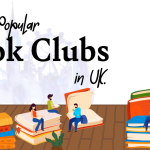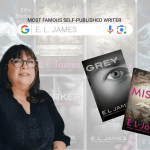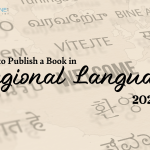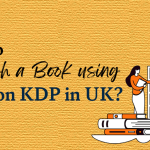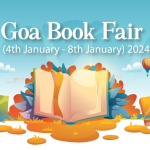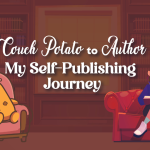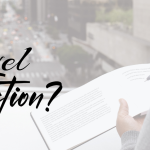November, for many writers, is more than just the month preceding the holiday season. It’s a time of literary fervour, a period marked by frenetic typing, countless cups of coffee, and a collective pursuit of an ambitious goal. Welcome to NaNoWriMo, a phenomenon that has been sweeping through the global writing community since its inception.
In this exploration, we’ll unravel the origins, purpose, and impact of National Novel Writing Month, better known as NaNoWriMo
Read: How to use ChatGPT & other AI systems to Assist you with Book Marketing.
The Genesis of NaNoWriMo: A Bold Experiment in Creativity
NaNoWriMo was born in 1999 when freelance writer Chris Baty, along with a group of friends, embarked on a daring adventure—to write a 50,000-word novel in just 30 days. The idea was simple but audacious: set aside the inner critic, ignore the impulse to edit, and focus solely on the act of creation. What started as a small group of 21 participants in the San Francisco Bay Area has since burgeoned into a global phenomenon, with thousands of writers from diverse backgrounds and skill levels participating each year.
The 50,000-Word Challenge: A Quest for Quantity and Quality
At the heart of NaNoWriMo lies a singular challenge: write a 50,000-word novel in the span of a month. This goal may seem daunting, even insurmountable, to those unfamiliar with the intense world of novel writing. However, the essence of NaNoWriMo is not merely about achieving a specific word count; it’s about embracing the creative process, overcoming self-doubt, and nurturing the discipline needed to bring a novel to life.
The 50,000-word target, while arbitrary in its numerical value, serves a crucial purpose. It represents a significant chunk of what is considered a standard novel length. By setting this goal, NaNoWriMo encourages participants to push past the initial hurdles of procrastination and perfectionism, fostering a mindset focused on progress rather than perfection.
The NaNoWriMo Community: A Global Network of Writers
One of the key drivers behind NaNoWriMo’s success is the sense of community it cultivates. Writing is often seen as a solitary endeavour, but NaNoWriMo transforms it into a collective experience. Participants, known as Wrimos, connect through local writing groups, online forums, and social media platforms. This virtual and real-world camaraderie provides support, encouragement, and a shared sense of purpose.
Local Municipal Liaisons (MLs) play a pivotal role in organising regional events, write-ins, and pep talks. These volunteer leaders act as beacons of inspiration, guiding Wrimos through the highs and lows of the writing journey. The result is a global network of writers, ranging from first-time novelists to seasoned authors, all united by the common goal of conquering the challenges of NaNoWriMo.
The NaNoWriMo Toolkit: Resources for Success
To aid Wrimos in their creative odyssey, NaNoWriMo offers a toolkit replete with resources. The organisation provides a digital space for writers to track their progress, access webinars, and connect with fellow participants. The Young Writers Programme extends the challenge to aspiring novelists of all ages, fostering a love for storytelling from an early age.
The NaNoWriMo website becomes a hub of activity during November, featuring virtual write-ins, forums for genre-specific discussions, and inspirational content from established authors. Additionally, sponsors often collaborate with NaNoWriMo to provide participants with exclusive offers on writing software, editing services, and publishing opportunities.
Beyond November: The Impact of NaNoWriMo on Writers
While NaNoWriMo is officially a month-long event, its impact extends far beyond the confines of November. Many successful novels, including bestsellers like Sara Gruen’s “Water for Elephants” and Erin Morgenstern’s “The Night Circus,” had their roots in NaNoWriMo. The challenge serves as a catalyst for writers to jumpstart their creative endeavours, providing the momentum needed to carry their projects to completion.
Participating in NaNoWriMo instills a sense of discipline and routine in writers. The daily word count goals foster a writing habit that, for many, becomes a lasting practice. The experience teaches participants to navigate the ebb and flow of creativity, discovering that the act of writing is not solely dependent on inspiration but also on dedication and perseverance.
You may also like: How to Make Book Design More Appealing to the Reader
Overcoming Challenges: NaNoWriMo and the Writing Process
The intensity of NaNoWriMo brings forth its fair share of challenges. Participants may grapple with writer’s block, self-doubt, or the pressure to conform to a predetermined plot. However, these challenges, rather than hindrances, become integral parts of the writing process. NaNoWriMo encourages writers to embrace imperfections, view detours as opportunities for exploration, and recognise that the first draft is a canvas that can be refined in the editing phase.
The collective nature of NaNoWriMo also provides a sense of solidarity in facing these challenges. Knowing that thousands of writers worldwide are navigating similar struggles creates a supportive environment where setbacks are seen as stepping stones towards growth.
The Evolution of NaNoWriMo: Adaptations and Expansions
Over the years, NaNoWriMo has evolved to accommodate the diverse needs of its participants. The organisation recognises that not every writer adheres to a traditional novel format. To be more inclusive, they have introduced “rebel” categories, allowing participants to work on scripts, non-fiction, or other creative projects that may not fit the conventional definition of a novel.
Camp NaNoWriMo, a more flexible version of the challenge, takes place in April and July. During these months, writers can set their own word count goals, providing a customised approach to the writing challenge. This adaptability reflects NaNoWriMo’s commitment to meeting writers where they are in their creative journey.
Critiques and Controversies: NaNoWriMo Under Scrutiny
Despite its widespread popularity, NaNoWriMo has not been without its share of critiques. Some argue that the emphasis on quantity over quality perpetuates the notion that writing is a race, potentially leading to hastily produced and poorly crafted manuscripts. Critics also point out that the 50,000-word goal may not be conducive to all writing styles or genres, and the pressure to conform to this standard can be counterproductive.
However, defenders of NaNoWriMo contend that the challenge serves as a valuable motivator and a tool for overcoming perfectionism. The emphasis on speed is viewed as a means of silencing the inner critic and allowing the creative spark to flourish. Additionally, many writers use NaNoWriMo as a starting point, recognising that the true work of refining and editing takes place in the months that follow.
Here are some notable writers and their works that originated from NaNoWriMo:
- Sara Gruen: Water for Elephants Sara Gruen’s historical novel “Water for Elephants” is one of the most successful works to emerge from NaNoWriMo. Set in the world of a travelling circus during the Great Depression, the novel captivated readers with its rich storytelling and vivid characters.
- Erin Morgenstern, The Night Circus Erin Morgenstern’s enchanting and magical novel “The Night Circus” started as a NaNoWriMo project. The story, which revolves around a mysterious circus that appears at night, became a bestseller and established Morgenstern as a prominent voice in fantasy literature.
- Hugh Howey, Wool Hugh Howey’s dystopian science fiction novel “Wool” began as a NaNoWriMo project. The novel explores a post-apocalyptic world where people live in a massive underground silo. “Wool” gained widespread acclaim and led to the author’s success in the self-publishing realm.
- Rainbow Rowell, Fangirl Rainbow Rowell, known for her contemporary young adult fiction, wrote “Fangirl” during NaNoWriMo. The novel delves into the world of fan fiction and follows the journey of a college freshman navigating the challenges of her new life.
- Marissa Meyer, Cinder Marissa Meyer’s debut novel, “Cinder,” the first installment in The Lunar Chronicles, was drafted during NaNoWriMo. The series is a futuristic retelling of classic fairy tales, with “Cinder” offering a unique take on Cinderella set in a sci-fi world.
- Jason Hough: The Darwin Elevator Jason Hough’s science fiction thriller “The Darwin Elevator” was born out of NaNoWriMo. The novel is set in a post-apocalyptic future where a space elevator in Darwin, Australia, holds the key to humanity’s survival.
- Lani Diane Rich: Time Off for Good Behaviour Lani Diane Rich’s romantic comedy “Time Off for Good Behaviour” was penned during NaNoWriMo. The novel explores the ups and downs of love and relationships with humour and warmth.
- Stephanie Perkins: Anna and the French Kiss Stephanie Perkins, known for her contemporary young adult romance novels, wrote “Anna and the French Kiss” during NaNoWriMo. The novel is a charming love story set in Paris and became a favourite among YA readers.
- Raina Telgemeier, Drama Raina Telgemier, a graphic novelist, used NaNoWriMo as a creative spark for “Drama,” a graphic novel exploring the dynamics of middle school theater. Telgemeier is celebrated for her contributions to the world of graphic novels for young readers.
- Andy Weir: The Martian While not a NaNoWriMo novel in the traditional sense, Andy Weir began serialising “The Martian” on his blog, and portions of it were written during NaNoWriMo. The novel, later published as a book, gained immense popularity and was adapted into a successful film starring Matt Damon.
You may also like: Top 10 Best Biographies of All Time
Conclusion: The NaNoWriMo Legacy
As November rolls around each year, the writing community eagerly anticipates the arrival of NaNoWriMo. Whether a seasoned novelist or a first-time participant, writers from all walks of life come together to embark on a collective creative journey. NaNoWriMo is more than a writing challenge; it’s a celebration of storytelling and a testament to the boundless creativity that resides within each writer.
Through its emphasis on community, discipline, and the sheer joy of creation, NaNoWriMo has left an indelible mark on the literary landscape. It has inspired countless novels, forged lasting connections among writers, and demystified the writing process for many aspiring authors.
Read: Amazon Ads for Authors: How Authors Can Promote Their Books Through Amazon Ads
As we delve into the world of NaNoWriMo each November, we are reminded that, sometimes, the greatest stories emerge not from meticulous planning but from the raw, unbridled passion that NaNoWriMo so beautifully ignites. So, grab your pens and keyboards, fellow Wrimos, and let the words flow—a novel awaits its moment of creation.
Publish your book with BlueRoseONE and become a bestselling author. Don’t let your dream of becoming an author fade away, grab the opportunity now and publish your book – be it fiction, non fiction, poetry or more.




